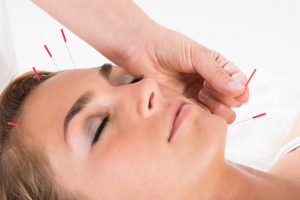
Considered part of traditional Chinese medicine, acupuncture is thought to be a technique for balancing the flow of energy or life force known as qi or chi (pronounced CHEE). This force is believed to flow through various pathways of the body, and by inserting needles into specific spots chi can be re-balanced.
Is acupuncture a real science?
Modern medicine generally views acupuncture as a pseudoscience that is not based on scientific knowledge. However, a new study finds that acupuncture does make a tangible difference in the body, helping to release a substance involved in pain reduction.
While acupuncture previously did have its place in the therapeutic world, it was typically relegated to optional therapy, with no real evidence that it had any actual impact on pain. Previous studies have produced mixed results, further discrediting its validity.
But researchers in a new study from LA BioMed have found that acupuncture, when used with the reinforcement method or with heat, can lead to the release of nitric oxide in the skin at the “acupoints” where the needles are inserted.
Nitric oxide is a chemical found in the body that increases blood flow and encourages the release of pain-relieving substances. It also causes the skin to feel warmer.
“Our lab has developed a painless, non-invasive biocapture device that can sample human biomolecules over specific skin regions. With this tool, we were able to obtain the first evidence that nitric oxide is released from the human skin surface at a higher level with the proper acupuncture methodology and the use of heat,” said Sheng-Xing Ma, MD, Ph.D., an LA BioMed lead researcher.
Studies provide tangible results of pain relief
For their study, the researchers used a low-force and rate/reinforcement method of acupuncture. A total of 25 men and women aged 18 to 60 participated in the study. Acupuncture needles were gently inserted and then delicately twisted for two minutes or until they achieved a sensation of “de qi”: soreness, numbness, distention, or pain. The needles were then further manipulated using gentle amplitude and moderate speed over a period of 20 minutes.
The heat was also applied for 20 minutes, with elevated levels of nitric oxide found at the points where the needles were inserted.
To make sure this was a true result, the researchers also conducted the test with high frequency and force, which is known as the reduction method. They found that in the tested skin areas, the levels of nitric oxide were reduced.
The researchers believe that these findings can help prove the validity of acupuncture therapy, but they will continue to explore the differences between the reinforcement and reduction methods to determine their effectiveness in pain relief. Understanding the precise molecular mechanisms involved is also of great focus.